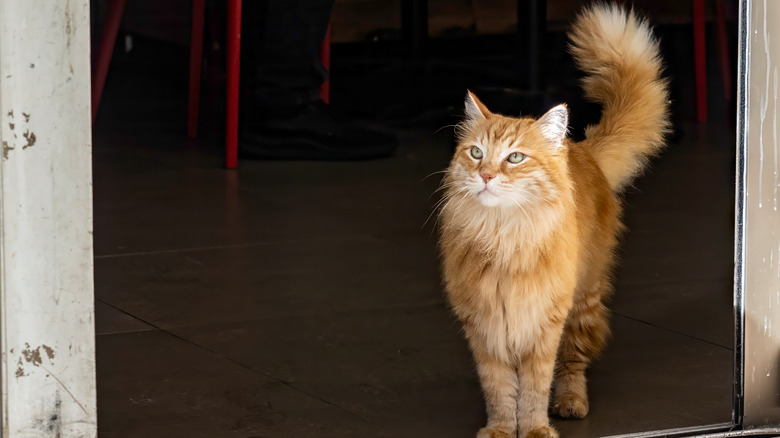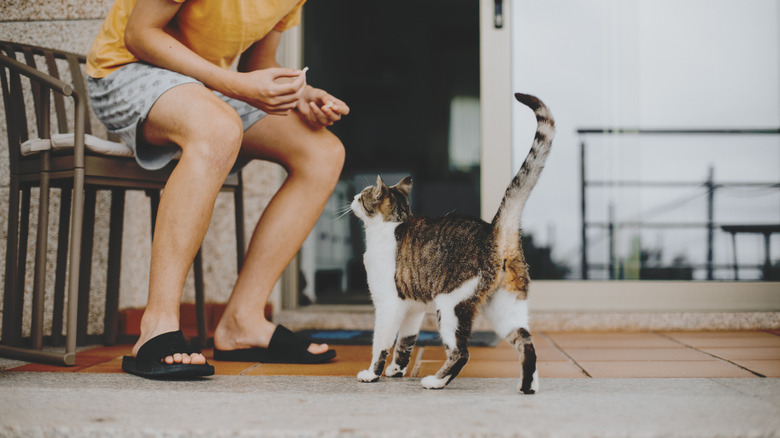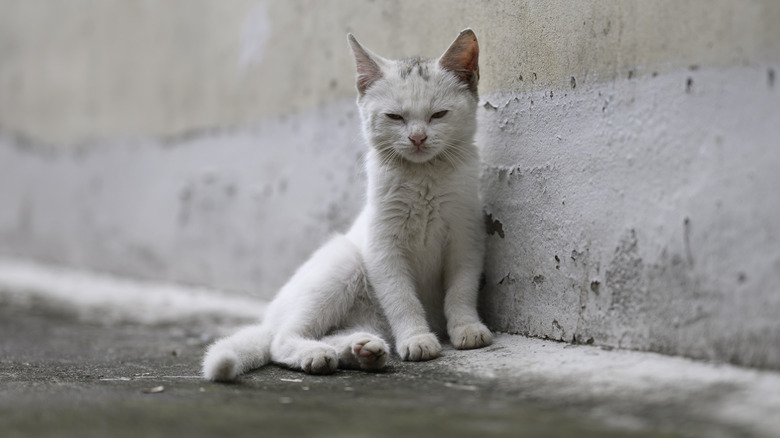Cats Wag Their Tails Too. Here's Why
Your cat's tail is a built-in mood ring, and it's always sending signals. A softly swaying tail often indicates curiosity or contentment, while rapid movements can signal agitation. Certain gestures, like a high, quivering tail, can even signify excitement or affection, especially when greeting a trusted person. Studies, such as 2021 research published in the peer-reviewed journal Animals, suggest that this upright tail posture is a common way cats express friendliness toward humans, frequently followed by cute actions like rubbing on you.
Beyond emotions, tail wagging in cats reflects an ability to adapt their communication strategies to suit their environment — for example, a shared home with humans. Behavioral research has shown that felines modify how they use tail signals to connect with their people. This adaptability allows cats to use their tails not only to convey their emotional states but also as a deliberate tool for interaction. Understanding these nuances will help cat parents better interpret their feline's behavior and foster deeper bonds. Moreover, researchers noted in a separate article published in Animals "that understanding behavioural plasticity and other recently evolved traits of domestic cats may lead to management strategies that maximise health and welfare of cats, wildlife, and humans."
Just as it's important to pay attention to and "read" the shake and shape of a dog's rear extension, so too with cats. Now, move over, Rover, as we unpack the furl and flicker of wagging feline tails.
Tell-tale tails and their role in feline communication
Your cat's tail is an expressive tool, and each movement or gesture it makes can reveal a lot about their mood. One of the most common tail positions is a high, upright tail, often quivering slightly. This is a friendly signal, typically seen when cats greet their humans or anticipate something positive, like feeding time. Research focused on cat tails' social function, such as a 2009 study published in Behavioral Processes, highlight that this posture often precedes affiliative (read: positive) behaviors like rubbing against their owners' legs.
When a cat's tail lashes back and forth rapidly, it's a clear sign of agitation or irritation. You might notice this if you're petting them, and they've had enough. As you likely know, ignoring it could lead to a swat or nip. On the other hand, subtle tail tip twitches often indicate focus, such as when your cat is stalking a toy or prey. Research on feline communication shows that these movements reflect your cat's heightened concentration and readiness to act.
Some tail movements are deeply tied to affection and trust. For example, a cat wrapping their tail around you or another cat can signal a sense of safety and connection, akin to offering a hug. In contrast, a forcefully thumping tail or one held low and stiff may indicate discomfort, stress, or fear. Understanding these gestures in the context of their environment and other signals — like ear positions, posture, and vocalizations — is essential for decoding your cat's mood. Studies on multimodal communication in cats, including 2023 research published in Animals, emphasize the importance of integrating these cues to figure out your cat's emotions and respond appropriately.
When tail wagging might signal that something's wrong
While tail wagging is a normal part of feline communication, there are times when it can signal something more than just emotions, as it may be indicative of certain conditions. (Read here for cat tail injury symptoms and treatment.) Sudden changes in tail movement patterns or frequency may indicate discomfort or stress. For example, excessive tail wagging paired with signs like lethargy, loss of appetite, or avoiding contact could point to an underlying medical issue, including pain, tail injuries, or even neurological disorders. Cats with conditions like feline hyperesthesia syndrome — a sensitivity that causes tail twitching and other behaviors — may exhibit exaggerated tail movements that warrant attention.
Physical injuries, such as sprains or fractures, are another potential cause of unusual tail behavior. If your cat's tail appears limp or they react negatively to touch in that area, it could indicate trauma or nerve damage. Skin irritations from fleas, allergies, or infections can also lead to excessive tail movement or biting. Observing such signs in tandem with tail movements can provide vital clues to your cat's health. In such cases, pet parents may want to err on the side of safety and consult a veterinarian for prompt diagnosis and treatment.
Even if your cat's tail wagging seems normal, paying attention to the context and frequency is key to understanding your pet. Behavioral plasticity allows cats to adapt their communication styles, including tail movements, to fit their environments. However, monitoring sudden changes in behavior can help you identify stressors or potential health concerns before they escalate. After all, if a picture is worth a thousand words, a wagging tail may be worth a thousand meows.
For more interesting details about feline behavior, check out these seven facts about cats' tails.


